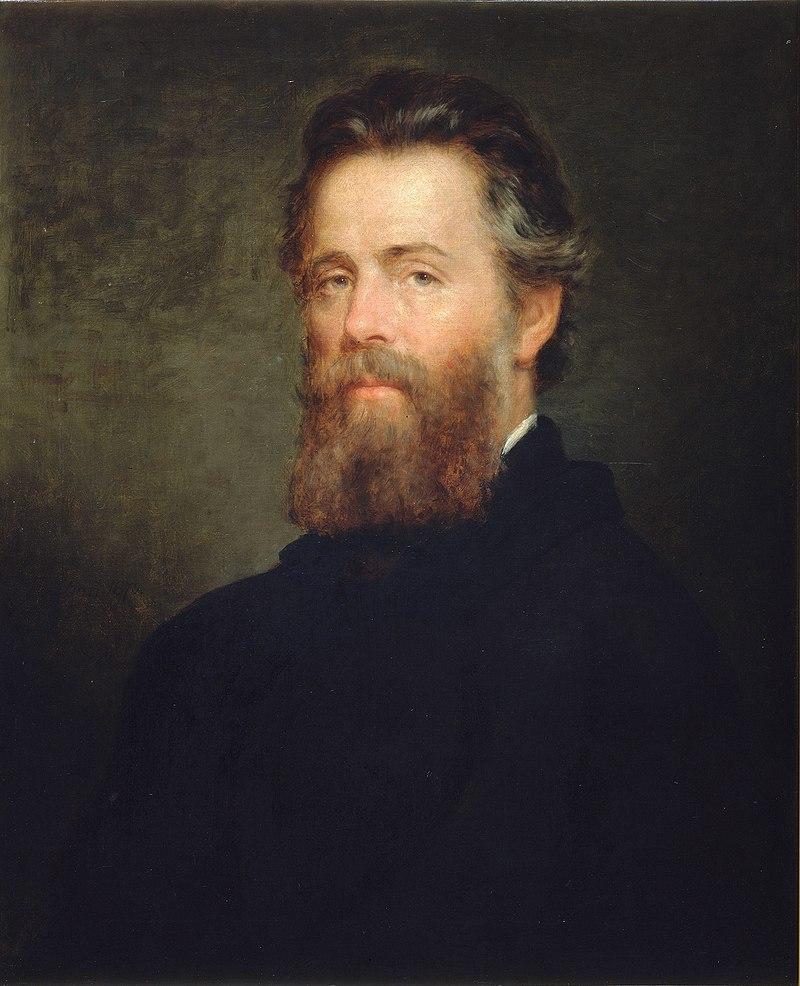Created by Amy Batt on Thu, 05/02/2024 - 18:20
Description:
Herman Melville is often considered one of the key figures of the dark romanticism movement in American literature. In order to understand Melville's relationship to dark romanticism, it is important to consider the historical context in which he wrote. Melville was born in 1819, a time of great social and political upheaval in the United States. The country was grappling with issues such as slavery, industrialization, and westward expansion, and many writers of the time were deeply affected by these turbulent events. Melville's writing reflects this sense of turmoil and uncertainty, as he grappled with questions of morality, justice, and the nature of evil. Dark romanticism is a literary subgenre that emerged in the 19th century, focusing on the darker aspects of human nature, death, sin, and the supernatural. Melville's works, particularly his masterpiece "Moby-Dick," exemplify the themes and elements of dark romanticism. Melville's exploration of the darker side of human nature can be seen in his portrayal of characters who are morally ambiguous or flawed. In "Moby-Dick," the protagonist Captain Ahab is consumed by his obsessive quest for revenge against the white whale that maimed him, leading him to his own destruction. Ahab's descent into madness and self-destruction reflects the dark and tragic aspects of the human psyche that dark romanticism seeks to explore. Melville's works also delve into themes of sin and guilt, often drawing on biblical imagery and symbolism. In "Billy Budd," the title character is a pure and innocent young sailor who becomes ensnared in a web of deceit and betrayal. The story explores the tension between good and evil, innocence and corruption, and the tragic consequences of human folly. Furthermore, Melville's fascination with the supernatural and the unknown is evident in his writing, (Melville Electronic Library.) In "Benito Cereno," Melville tells the story of a slave rebellion on a Spanish ship, with a twist that reveals the true horrors lurking beneath the surface.The story blurs the line between reality and illusion, exposing the darkness that lies hidden within the human heart. His writing, influenced by figures such as Poe and Hawthorne, explores the darker aspects of human nature with depth and complexity, (ROMANTICISM.) Melville's works exemplify the themes and characteristics of dark romanticism, exploring the complexities of human nature and society through tales of obsession, madness, and tragedy.
“Herman Melville.” ROMANTICISM, romanticism6th.weebly.com/herman-melville.html. Accessed 2 May 2024.
“Herman Melville.” Wikipedia, Wikimedia Foundation, 1 May 2024, en.wikipedia.org/wiki/Herman_Melville#/media/File:Herman_Melville_by_Joseph_O_Eaton.jpg.
“Melville Electronic Library.” Herman Melville Electronic Library, melville.electroniclibrary.org/journals. Accessed 2 May 2024.
Copyright:
Associated Place(s)
Part of Group:
Featured in Exhibit:
Artist:
- Joseph Oriel Eaton


